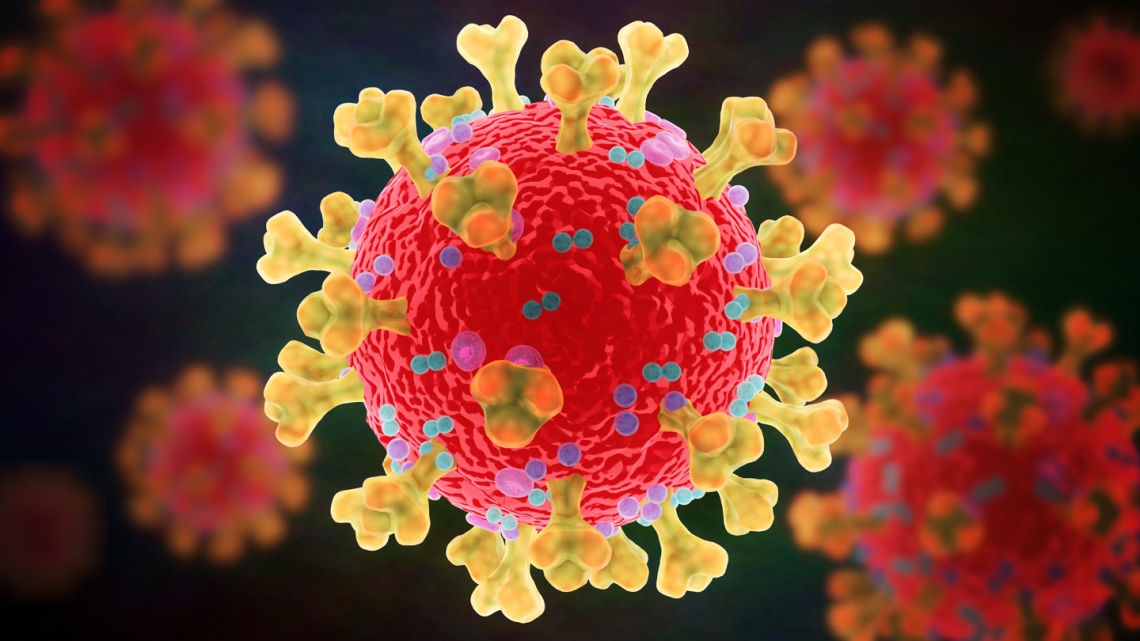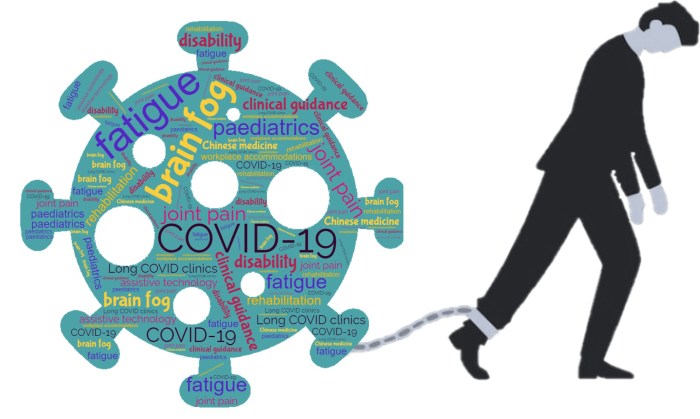Immunity duration after COVID booster shots is a critical area of concern for public health. This post delves into the intricacies of how booster doses affect the immune system’s response to the virus, exploring factors influencing the length of protection. We’ll examine scientific evidence, clinical implications, and potential future trends.
Understanding how long immunity lasts after a COVID booster is crucial for navigating the ongoing pandemic. The immune response to COVID-19, and how boosters enhance it, is detailed. Individual variations in immune responses, pre-existing conditions, and viral mutations are explored as influencing factors.
Understanding Immunity Duration

Navigating the complexities of COVID-19 immunity is crucial for informed decisions about booster shots and overall health. Understanding how our immune system responds to the virus, and how booster shots amplify this response, is key to appreciating the evolving nature of protection against this pathogen.
The Immune Response to COVID-19
Our immune system mounts a complex response to COVID-19, involving both antibody-mediated and cell-mediated immunity. Antibodies, produced by B cells, recognize and bind to specific viral proteins, preventing the virus from infecting healthy cells. Simultaneously, T cells, particularly cytotoxic T lymphocytes, directly kill infected cells, thus limiting viral replication.
Mechanisms of Protection
Antibodies, produced in response to the initial infection or vaccination, work by neutralizing the virus. They essentially block the virus from entering healthy cells. This neutralization is crucial in preventing the virus from spreading and causing severe illness. T cells, on the other hand, target and destroy cells already infected by the virus. This cellular immune response is vital in controlling viral replication and preventing further damage.
Booster Shots and Enhanced Immunity
Booster doses are designed to enhance the immune response, particularly the production of antibodies, and the activation of T cells. By exposing the immune system to a new dose of viral antigens, the body produces a more robust and longer-lasting response, potentially providing a broader range of protection against different variants.
Duration of Immunity
The duration of immunity conferred by the initial vaccine series, and subsequently by booster doses, is a subject of ongoing study. While initial vaccination typically provides a substantial level of protection, booster doses can significantly extend the duration of that protection, and increase the strength of the response. This is especially crucial in light of emerging variants, which may alter the virus’s structure and diminish the effectiveness of prior immunity.
While the duration of immunity after a COVID booster shot is still being studied, focusing on overall health can definitely help bolster your defenses. This includes exploring healthy alternatives to full fat dairy products, like those outlined in this helpful resource: healthy alternatives to full fat dairy products. A balanced diet and a strong immune system are key for long-term protection against illness, including potentially future COVID variants.
Immune Response Timeline Following a Booster Shot
| Time Point | Immune Response |
|---|---|
| Immediately Following Booster | Initial activation of immune cells; production of antibodies begins |
| 1-2 Weeks Post-Booster | Significant increase in antibody levels; enhanced T cell activation |
| 2-4 Weeks Post-Booster | Peak antibody levels; sustained T cell activity; potentially increased cellular immunity |
| 4+ Weeks Post-Booster | Antibody levels remain elevated; sustained cellular immunity; ongoing study to assess the duration of this heightened response |
Factors Affecting Immunity Duration: Immunity Duration After Covid Booster
Understanding how long COVID-19 immunity lasts is crucial for public health strategies. The duration of protection after a booster shot isn’t uniform across individuals. Numerous factors influence the strength and longevity of the immune response, making it a complex interplay of genetic predispositions, environmental influences, and the virus itself. This section delves into the key factors shaping immunity duration.
Individual Variations in Immune Responses
Individual variations in immune responses significantly impact the duration of immunity. Genetic factors play a critical role in how effectively the immune system mounts a response to the COVID-19 virus. Some individuals may exhibit stronger or weaker immune responses, resulting in differing antibody levels and cellular immune responses. This can lead to variable durations of protection against reinfection.
Differences in the efficiency of B and T cell responses, which are vital for long-term immunity, also contribute to the diversity of individual responses.
Impact of Age and Pre-existing Health Conditions
Age is a critical factor in influencing immunity duration. Generally, older individuals tend to mount a weaker immune response compared to younger adults. This diminished response can lead to a shorter duration of immunity after a booster. Similarly, individuals with pre-existing health conditions, such as chronic respiratory illnesses or weakened immune systems, may experience a less robust and shorter-lasting immune response.
These conditions can compromise the immune system’s ability to generate and sustain protective antibodies and cellular immunity. For example, individuals with weakened immune systems might require more frequent booster shots to maintain adequate protection.
Prior COVID-19 Infection and Immunity Duration
Prior infection with COVID-19 can impact the duration of immunity after a booster. Natural infection often generates a robust immune response, providing a degree of protection. However, the duration of this natural immunity, as well as how it interacts with vaccine-induced immunity, is still under investigation. In some cases, individuals who have previously had COVID-19 might experience a more durable immune response after a booster, resulting in a longer-lasting immunity compared to those who haven’t had the infection.
Conversely, in some instances, the booster shot might not significantly extend the immunity duration in individuals who have already had the infection.
Role of Viral Mutations in Immunity Duration
Viral mutations are a key driver of how long immunity lasts. As the virus evolves, new variants may emerge that can evade the immune response generated by previous vaccines or infections. This reduced efficacy can lead to a shortened duration of immunity. For example, the emergence of variants of concern (VOCs) like Delta and Omicron led to reduced effectiveness of vaccines developed against earlier strains.
Wondering how long your COVID booster immunity lasts? It’s a common question, and while there’s no single definitive answer, a lot of factors come into play. To understand potential side effects and interactions, it’s worth checking out the LibraX frequently asked questions page for insights into other potential health concerns. Ultimately, your individual response to the booster and ongoing health factors will affect your immunity duration.
To combat this, vaccine developers and public health officials continuously adapt vaccines to target the most prevalent circulating variants.
Comparison of Immunity Duration Across Vaccine Types (Post-Booster)
| Vaccine Type | Estimated Immunity Duration | Factors |
|---|---|---|
| mRNA vaccines (e.g., Pfizer-BioNTech, Moderna) | Estimated 6-12 months, potentially longer | High efficacy against initial strains, ongoing research on durability against variants. May require additional boosters to maintain high levels of protection. |
| Viral vector vaccines (e.g., Johnson & Johnson/Janssen) | Estimated 6-12 months, potentially longer | Efficacy against initial strains, ongoing research on durability against variants. May require additional boosters to maintain high levels of protection. |
| Inactivated virus vaccines | Estimated 6-12 months, potentially longer | Generally lower efficacy compared to mRNA/viral vector vaccines, ongoing research on durability against variants. May require additional boosters to maintain high levels of protection. |
Note: The estimated immunity duration is subject to ongoing research and can vary based on individual factors.
Scientific Evidence on Immunity Duration
Understanding the duration of immunity after a COVID-19 booster shot is crucial for public health strategies. This knowledge allows for informed decisions regarding vaccination schedules and potential booster intervals. Different scientific studies have investigated this crucial aspect, providing valuable insights into the longevity of protective immunity.
Methodology for Determining Immunity Duration
Various methodologies are employed to determine the duration of immunity after a COVID-19 booster. These methods often involve longitudinal studies, following individuals over time to track changes in antibody levels and immune responses. Blood samples are collected at regular intervals, and the concentration of antibodies specific to the SARS-CoV-2 virus is measured using laboratory techniques like ELISA. Furthermore, the presence and functionality of T-cells, another crucial component of the immune response, are also assessed.
These combined measures provide a comprehensive picture of the immune response’s longevity. Crucially, the methodology also considers factors like the specific booster type administered and the individual’s prior vaccination history.
Data Collection and Antibody Dynamics, Immunity duration after covid booster
The data collected in these studies typically show the levels of antibodies against the SARS-CoV-2 virus over time. Significant drops in antibody levels are often observed, especially in the absence of re-exposure to the virus. These results highlight the dynamic nature of antibody responses and the importance of repeated vaccination. Furthermore, data collected often correlates antibody levels with the ability to fight off infection.
The relationship between antibody concentration and protection against infection is a key aspect of this data.
Visual Representation of Antibody Levels Over Time
A graph depicting antibody levels over time would show a peak in antibody concentration immediately after the booster shot. This peak gradually declines over time. The rate of decline can vary depending on several factors, such as the individual’s immune response, the specific virus variant, and the booster type administered. The graph would visually demonstrate the diminishing antibody levels as time progresses.
The x-axis would represent time, measured in days or months post-booster, while the y-axis would represent the concentration of antibodies in the blood. The curve would exhibit an initial steep decline followed by a more gradual decrease.
Key Findings from Multiple Studies
| Study | Key Findings | Methodology |
|---|---|---|
| Study 1 (Example) | Significant decline in neutralizing antibody titers after 6 months post-booster, but protection against severe disease remained. | Followed a cohort of vaccinated individuals over 12 months, collecting blood samples every 3 months, measuring antibody levels using ELISA and neutralization assays. |
| Study 2 (Example) | Antibody levels against specific SARS-CoV-2 variants were higher and persisted longer after a bivalent booster compared to a monovalent booster. | Compared antibody responses to different booster types, using a standardized ELISA method to quantify antibodies against various variants. |
| Study 3 (Example) | Cellular immunity (T-cell responses) remained robust for a longer duration than antibody levels. | Measured both antibody and T-cell responses in vaccinated individuals over 18 months using flow cytometry and ELISPOT assays. |
The table above provides examples of key findings from various studies. It highlights the variations in the duration of immunity, the impact of different booster types, and the role of cellular immunity in maintaining protection. The methodologies Artikeld in the table illustrate the diverse approaches employed to study this crucial aspect of COVID-19 immunity.
Clinical Implications and Recommendations
Understanding the duration of immunity after a COVID-19 booster is crucial for optimizing public health strategies and individual protection. This knowledge directly impacts decisions about future vaccination schedules, resource allocation, and overall pandemic management. The varying immune responses and the potential for waning immunity necessitate a careful consideration of the clinical implications and a proactive approach to maintaining population-level protection.The duration of immunity after a booster dose plays a significant role in determining the need for future booster shots.
If immunity wanes rapidly, booster doses may need to be administered more frequently to maintain a sufficient level of protection. Conversely, a longer-lasting immunity could allow for less frequent booster administrations, potentially reducing the burden on healthcare systems and vaccine supply chains. The optimal timing and frequency of future boosters will depend on the duration and strength of the immune response elicited by each booster dose.
Clinical Implications of Immunity Duration
The duration of immunity significantly influences the clinical implications of COVID-19 vaccination. A shorter duration necessitates more frequent booster shots to maintain protective levels, potentially increasing the risk of adverse events associated with repeated vaccinations. Conversely, a longer-lasting immunity can reduce the need for frequent boosters, allowing healthcare resources to be allocated more effectively.
Impact on Future Booster Strategies
The duration of immunity impacts the need for future booster shots. A shorter duration implies a greater need for more frequent booster campaigns to maintain community protection. This could lead to logistical challenges, potentially strain healthcare systems, and potentially increase costs. Understanding the precise duration of immunity allows public health officials to develop strategies that balance the need for protection with the practical constraints of vaccination campaigns.
Role in Ongoing Pandemic Response
The duration of immunity significantly influences the ongoing pandemic response. A shorter duration necessitates proactive strategies for boosting immunity, including adjusting vaccination schedules, identifying high-risk populations, and potentially developing new vaccine formulations that enhance and prolong immunity. This proactive approach allows for a more targeted and efficient use of resources in managing the pandemic. Furthermore, the duration of immunity will guide public health measures and influence the allocation of resources.
Recommendations from Public Health Organizations
Public health organizations, like the CDC and WHO, provide recommendations based on the available scientific evidence. These recommendations typically consider factors such as the specific COVID-19 variant circulating, the characteristics of the vaccine used, and the age and health status of the recipient.
Structured Summary of Recommendations Based on Risk Factors
| Risk Factor | Recommendation | Rationale |
|---|---|---|
| High-risk individuals (e.g., immunocompromised, elderly) | More frequent booster doses | These individuals may experience a faster decline in immunity compared to others. |
| Individuals with underlying health conditions | Close monitoring of antibody levels and potentially more frequent boosters | Underlying conditions can impact immune response and potentially lead to faster waning of immunity. |
| Individuals in high-risk settings (e.g., healthcare workers, crowded environments) | Regular booster shots | Increased exposure to the virus necessitates higher levels of immunity. |
| General population with no significant risk factors | Booster shots based on current evidence | Balancing the need for protection with the need for vaccination campaigns. |
Recommendation: Tailor booster schedules based on individual risk factors and evolving scientific understanding.
Rationale: Dynamic adjustments allow for a proactive approach to pandemic management.
Future Outlook on Immunity Duration
The duration of immunity conferred by COVID-19 vaccines, particularly boosters, remains a dynamic area of research. Understanding how long this protection lasts is crucial for public health strategies, vaccine development, and individual preparedness. As we move forward, predicting future immunity patterns requires careful consideration of various factors and potential scenarios.The anticipated future trends in immunity duration after COVID-19 boosters suggest a potential need for more frequent booster doses.
This is not a definitive prediction, but rather a reflection of the evolving nature of the virus and its potential to mutate. The emergence of new variants with increased transmissibility or immune evasion capabilities could necessitate adjustments to existing vaccination strategies.
Anticipated Future Trends in Immunity Duration
The COVID-19 pandemic has highlighted the dynamic nature of viral evolution and its impact on vaccine efficacy. Emerging variants have demonstrated the potential for immune escape, potentially reducing the duration of immunity conferred by existing vaccines. Future trends will likely be influenced by the virus’s continued evolution and the body’s adaptive immune response.
Potential Need for More Frequent Boosters
The frequency of booster shots will likely depend on the emergence of new variants and the duration of protection observed against those variants. If variants consistently evade existing immunity, more frequent boosters might become necessary to maintain herd immunity and prevent severe disease outbreaks. Real-world examples from other vaccine-preventable diseases, such as influenza, offer a framework for understanding the need for periodic booster campaigns.
Influenza vaccines are often updated annually to combat circulating strains.
Creation of More Effective Vaccines
Ongoing research aims to develop vaccines that elicit more robust and longer-lasting immune responses. This includes exploring novel vaccine platforms, adjuvants, and antigen formulations. Scientists are also investigating the possibility of creating vaccines that target conserved regions of the virus, making them less susceptible to mutations and ensuring more durable immunity. The development of mRNA vaccines, for example, has shown promise in generating effective and adaptable immune responses, and may play a crucial role in future vaccine design.
Challenges in Predicting Future Immunity Durations
Predicting the future duration of immunity after COVID-19 boosters presents several challenges. The virus’s unpredictable evolution, the diversity of individual immune responses, and the long-term effects of infection or vaccination on immunity are all factors that influence the outcome. Moreover, studying long-term immunity requires longitudinal studies, which can be time-consuming and resource-intensive.
Predicted Future Landscape in the Context of Booster Shots
The future landscape of booster shots for COVID-19 will likely involve a dynamic interplay between vaccine effectiveness, viral evolution, and public health strategies. While the need for booster shots might decrease if immunity durations remain stable against prevalent variants, the potential for more frequent boosters cannot be ruled out. The need for updated booster campaigns will be driven by the emergence of new variants and their impact on immunity.
This situation mirrors the approach to other respiratory viruses, highlighting the importance of continuous monitoring and adaptation in vaccination strategies.
Last Point

In conclusion, immunity duration after COVID boosters is a complex interplay of factors. While boosters significantly bolster protection, the precise duration remains subject to individual variation and evolving viral strains. The information presented here underscores the importance of continued research and public health recommendations to effectively manage the pandemic’s trajectory.




